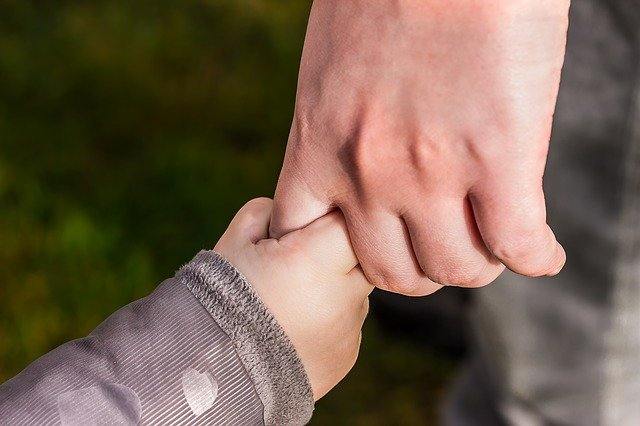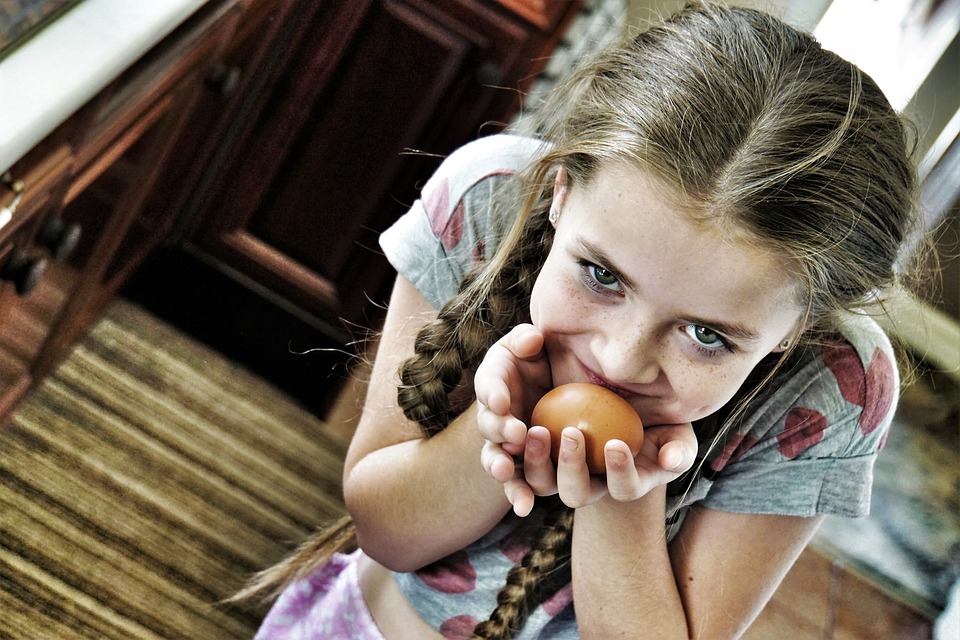
As parents, we want to give our children everything they need to help them grow and develop. Yet, we can’t deny that child growth also happens in the moments we are apart from them. Time apart from our children is normal. It is necessary to let our children interact with other family members, other children, and other trusted adults. This helps them gain socialization skills and develop their self-esteem. They’ll also learn some sense of independence.
Some children might feel uneasy when they are apart from their parents or primary caregiver. They may cry or break into a tantrum once they realize we’ll not be by their side, even if it’s only for a short time. This reaction is called separation anxiety. It’s normal for most children to feel this way, given their strong attachment to their primary caregiver.
However, if the child’s anxiety persists or worsens, the child may have separation anxiety disorder (SAD). Having SAD hinders them from normal functioning, and its effects may stretch throughout the child’s life, even up to adulthood in severe cases.
It’s been reported that separation anxiety is experienced by about 4% to 5% of American children aged seven to 11. For teens, around 1.3% are affected in the U.S. It’s essential to gain knowledge about this condition to know and look for the signs. Read on to understand how you can help your child who might be showing symptoms of separation anxiety to overcome it.
What is Separation Anxiety?
Veronica Raggi, Ph.D, states that “Separation anxiety is a mental health condition that manifests in early childhood and is characterized by persistent and developmentally inappropriate fear during separation.”
We can’t always be around our kids 24/7. Some parents might hire nannies and babysitters or enroll their children in daycare so someone can look after them while the parents attend to other responsibilities.
Most babies under four months old can quickly adapt to their caretaker. It’s around four to seven months that they instinctively develop object permanence wherein they are aware that objects and people exist even when these disappear from their view. Children may feel distressed when they can’t see their parents or guardian. Being unaware of the time passing, they suddenly feel anxious about when they’ll see their parents again.
Many babies start becoming independent after eight months. However, if their unease and anxiety persist from eight months to age one, the child might have separation anxiety.
Normal Separation Anxiety
When you entrust your child to another guardian or caregiver, your child might cry and try to keep their hold on you. They might also reject other people’s assistance or comfort.
This is considered normal if your kid is still young. There are many ways to help calm your child’s anxiety. You can make them get used to spending time apart by using the tips below.
Help the Child Get Used to New People
Ease your child’s anxiety by letting the child know more about the person you’ll be entrusting them with. You can invite the other person over to introduce them and let them spend time together. If your child is of preschool age, take the time to visit their preschool or daycare center to familiarize themselves with the place and the people there. This can make the separation process easier once the child feels more comfortable with the new faces.
 source: pixabay.com
source: pixabay.com
Practice Being Apart From Each Other
The best way for our children to get used to spending time apart is to go through with it. Avoid separation for long hours and distances at first. Try out brief periods of separation with your child instead. Assure them that nothing bad will happen during these short separations. You may opt for a few hours in the daycare center before committing your child to a whole-day session.
When you have to leave your child for a while, it’s better to do it after they’ve finished eating or sleeping. Their delicate and irritable moods might worsen their separation anxiety outside these times.
Reassure Your Child During Goodbyes
Stay calm when you say goodbye and tell them when they can expect to see you again, like after lunch so that they can easily understand. Let your child know that you’ll be back soon and that the place they’ll be going to is safe for them. They may react emotionally, but be firm and don’t come back after you’ve said goodbye. This will only make them respond more and make things worse. Also, come back precisely the time you promised your child. Upholding your promise can give your child confidence and soothe their separation anxiety.
These tips will work if your child’s separation anxiety is at a normal stage. If the child still feels intense separation anxiety after following these tips, your child might be experiencing separation anxiety disorder or SAD. In this case, it’s essential to give your child support so they can overcome their anxiety. You can check out Preggy to Mommy’s article on positive parenting to know more about this topic.
Separation Anxiety Disorder
Many kids overcome separation anxiety once they turn three years old. Suppose you observe that your children in preschool years experience intense fear, which starts to affect their daily life lasting for months. In that case, the child’s anxiety might have developed into separation anxiety disorder.
Separation Anxiety Disorder Symptoms
Normal separation anxiety and the disorder differ in intensity and how the child handles themselves during stressful situations. Your child might have a separation anxiety disorder if they manifest the following symptoms:
- Has intense fear of circumstances that might result in permanent separation (death of a loved one, getting lost)
- Refuses or excuses themselves from regular activities to avoid separation (go to school, meet with friends, sleep)
- Has physical complaints or even experiences physical symptoms (stomach pain, headache, or panic attacks) when you’re about to leave
- Always stays by your side and clings to you if you try to leave
Possible Causes
When a child experiences a traumatic event or a sudden change in their normal activities, separation anxiety might worsen. Knowing the life stresses affecting your child’s mental health is a good first step to treating their symptoms. The following experiences might have caused your child’s excessive distress during their early childhood and elementary school years, triggering their separation anxiety disorder:
- Changes in their situation or environment (moving to a new house, school, or child care center)
- Anxiety from a parent’s divorce or death of a loved one or pet
- Insecure attachment towards a parent or guardian
- Excessive worry triggered by a parent’s overprotectiveness
Risk factors
A Stanford Medicine article points out that “SAD is caused by both biological and environmental factors.” Some children are more prone to experiencing separation anxiety disorder and other mental disorders than others. These risk factors might have contributed to your child’s fears of separation:
- Anxious or overthinking temperaments
- Previous history of mental disorders among family members and close relatives

Other Mental Health Complications
Separation anxiety disorder must be taken seriously. It’s important to treat severe cases early to take care of the child’s mental well-being and prevent the possible onset of other mental disorders. If not addressed as soon as possible, the condition can worsen as they grow into adulthood.
If separation anxiety disorder is not treated early, these other mental disorders may also manifest:
- Other anxiety disorders (generalized anxiety disorder, social anxiety disorder, phobias, and panic attacks)
- Depression
- Obsessive-compulsive disorder or OCD
To help our children feel safe and secure despite what they’re going through, we must ensure that they get professional help for their separation anxiety disorder.
Seeking Professional Help for Separation Anxiety Disorder
To treat anxiety disorders, we need to determine whether your child’s experience is linked to a psychological condition. Once you seek professional treatment, the doctor will try to diagnose your child’s condition. In severe cases, an article from the NCBI notes that, “patients and family members may require intensive psychotherapy and psychoeducation to benefit from the treatment plan and understand expected outcomes.”
Diagnosis
To investigate your child’s symptoms, the doctor will check for your child’s medical history and require them to undergo a physical exam. Next, your child may need to be tested (blood test) so that the doctor can eliminate other possible causes of your child’s condition, such as physical illnesses or side effects from medication. If they can’t attribute the symptoms to physical ailments, the doctor will refer you and your child to seek professional help from adolescent psychiatry.
Instead of a laboratory test, a mental health professional will diagnose your child using special psychological interviews and assessment tools to examine your child’s mental health state. The doctor’s diagnosis will be based on the children’s symptoms and behavior.
Medical Definition
According to the Diagnostic and Statistical Manual, separation anxiety disorder can make a child feel heavily stressed if they leave home or get separated from specific individuals. The statistical manual published by the American Psychiatric Association also lists the following criteria for diagnosis of this condition:
- Excessive distress showing three (or more) signs of the following:
- Regular excessive sadness due to separation from home or loved ones
- Regular excessive fear over losing loved ones or if they experience harm
- Regular distress about experiencing an event that would separate them from certain individuals
- The child refuses to go outside or do anything that would trigger separation
- Refusing to sleep away from home or from certain individuals
- Recurring nightmares about separation
- Recurring complaints of physical symptoms when the child is to be separated from attachment figures or with impending separation
2. The child’s fears and anxiety persists for at least four weeks
3. Separation anxiety begins to affect other vital areas of the child’s life
4. Guarantee that the symptoms are due to separation anxiety disorder only and not other anxiety disorders
Treatment
If your child has mild separation anxiety disorder, medical treatment may not be necessary. For severe cases, the treatment will focus on equipping the child with coping skills to manage their anxiety and help the child feel secure and accepting of natural separations. The following can be done to treat severe cases:
- Cognitive Behavioral Therapy (CBT)
- Drugs and other medication
- Therapy provided to students by the school’s health professionals
- Parent’s participation in the child’s health appointments and using the techniques learned from this list of reliable parenting resources when dealing with the child

Final Thoughts
It’s normal for our children to experience separation anxiety as babies and toddlers. Once they become preschool to school age children, we need to look for signs and symptoms if their normal separation anxiety develops into a serious condition. If the distress is persistent, consult your doctor and seek professional advice. Early diagnosis and treatment prevent separation anxiety disorder from worsening. Therapy and medication can treat separation anxiety disorder and help your child manage their life stresses proactively.
Recommendations
We hope you were able to learn much from this article about separation anxiety in young children. If you need a more comprehensive guide, check out this book. You can also use this book to explain separation anxiety disorder to your kids.
Disclaimer: The information on this site is not intended or implied to be a substitute for professional medical advice, diagnosis, or treatment. All content, including text, graphics, images, and information, contained on or available through this website is for general information purposes only. Please see a medical professional if you need help with depression, illness, or have any concerns whatsoever. WE DO NOT OFFER MEDICAL ADVICE, COURSE OF TREATMENT, DIAGNOSIS, OR ANY OTHER OPINION on your conditions or treatment options. SERVICES OR PRODUCTS THAT YOU OBTAIN THROUGH THIS WEBSITE are for information purposes only and not offered as medical or psychological advice, guidance, or treatment.
We also use some affiliate links in this blog to help support the continuous production of wholesome parenting content such as this. 🙂 Feel free to use them to show your support.
Frequently Asked Questions (FAQs)



